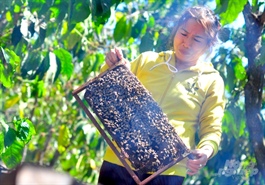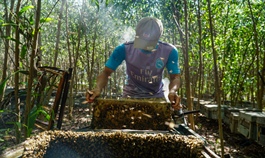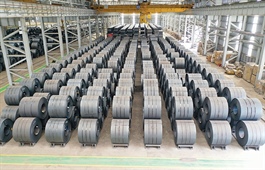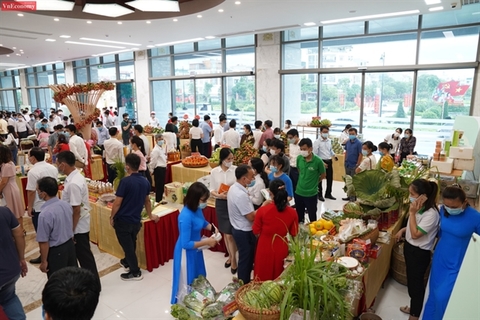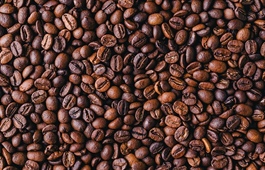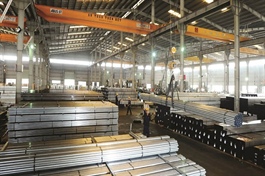Response scenarios required for increasing meat demand
Response scenarios required for increasing meat demand
As meat and poultry prices are fluctuating unpredictably, the national target of keeping inflation at below 4 per cent this year may not be so easy to reach.
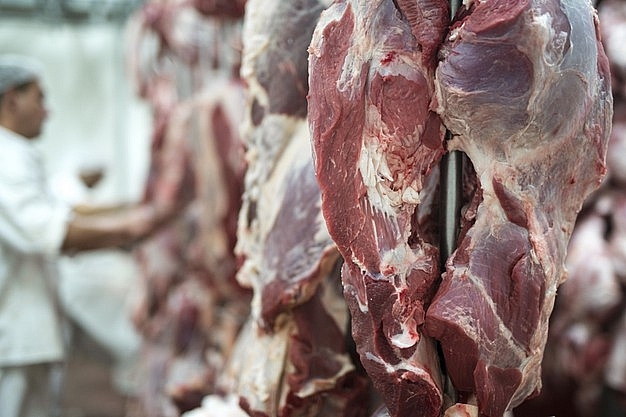
Response scenarios required for increasing meat demand- illustration photo (source: freepik.com)
|
The re-herding plan of the livestock industry has been hampered by expensive input materials and animal feed, while the price of some pig breeds is currently six times higher than before African swine fever (ASF) hit, rising from VND700,000 ($30) per pig to close to VND4 million ($173).
The latest data from the Ministry of Agriculture and Rural Development (MARD) showed that unpredictable developments in meat and poultry prices could impact the inflation-curbing target of less than 4 per cent set by the National Assembly for 2021.
Limited supply and strong demand are the reasons why chicken prices have also risen across the country in recent months. Particularly in April, the price of chicken increased from VND3,000 (13 US cents) to VND37,000 ($1.60) per kg, depending on the type.
Meanwhile, pork, which accounts for 70 per cent of the meat basket in Vietnam, is on a downward trend, despite a sharp drop in supply as many households were not able to re-flock their herds.
Last April, in the north, the price of live pigs decreased by VND1,000-2,000 (4-8 US cents) per kg compared to the previous month, while in the south and central Vietnam, the price also decreased by VND2,000 per kg.
Agricultural producers are being affected two-fold by global food prices rising for the 10th consecutive month. Ha Thu Hien, an analyst at VNDIRECT, commented that companies producing milk, feed, cooking oil, and meat may be negatively affected, as most firms in Vietnam have to import powdered milk, grain, and oil for production.
“These manufacturers may face challenges of higher raw material costs,” Hien said. Rising feed prices harm meat production while live hog prices are forecast to decline 19 per cent on-year in 2021, compared with highs during the ASF epidemic.
Other analysts warned that the meat price instability in Vietnam will not end anytime soon. Global market researcher Ipsos estimates that the country may have a shortage of 500,000 tonnes of pork, equivalent to 20 per cent of the total market’s demand as large-scale consumption has increased again.
“When the meat market falls into a price crisis, the biggest responsibility belongs to the MARD,” said Hoang Trong Thuy, an agricultural expert.
Thuy remembered that in April 2017, when the supply exceeded the demand, the pig price dropped to a record low of only VND20,000-22,000 (87-95 US cents) per kg, the leaders of the agricultural sector were troubled to direct purification of roughly 50 per cent of the sows, down to the current two million heads.
“Importing live pigs from Thailand for slaughter could be convenient if they are transported by road but prices would still not be competitive,” Thuy said. According to him, the current price of industrial live pigs from Thailand is about VND60,000 ($2.60) per kg, plus the cost of quarantine, transportation, slaughter, and other related costs, which can all rise to up to VND90,000 ($3.90) per kg.
“The MARD made false forecasts, miscalculations, and gave incorrect advice to the government, leading to the current meat price crisis,” Thuy said.
The market is witnessing a structural change in the livestock industry, with a growth rate of 6 per cent since 2018 and an average production of five million tonnes of meat, reaching 60kg of meat per capita and an export turnover of about $41 billion per year.
However, MARD Minister Nguyen Xuan Cuong saw the “imbalance caused by the fact that raising pigs accounts for 70 per cent of the entire industry – outweighing the other stages of the livestock industry, processing and consumption.”
In the strategy for the development of the livestock industry for 2020-2030, the MARD considers the change in people’s needs as per capita income increased $3,000 per person and year. The Vietnamese economy is forecasted to recover and develop strongly, with production already showing signs of a strong recovery since the fourth quarter of last year.
The Asian Development Bank (ADB) on April 28 forecast that Vietnam’s economic growth will be 6.7 per cent this year, higher than the National Assembly and government targets, and also higher than the 6.3-per-cent forecast made by the bank at the beginning of the year.
The average consumer price index (CPI) in the first four months of 2021 increased by 0.89 per cent on-year, the lowest four-month increase since 2016.
Andrew Jeffries, ADB country director for Vietnam, said that the nation’s inflation is likely to rise to 3.8 per cent in 2021 and 4 per cent in 2022 due to increased domestic consumption and an upward trend in oil prices amid the global recovery.
Assoc. Prof. Dr. Dinh Trong Thinh, an economic expert from the Academy of Finance, said that controlling the inflation below the mark of 4 per cent in 2021 may not so be easy because, in the second quarter, consumer demand will likely continue to rise and be a factor driving inflation to an increased level. “The instability of meat products, as well as price increases in most other products, are putting more pressure on the CPI,” Thinh told VIR.
He also noted, “price management and administration should be carried out openly and transparently, especially for stable items that are on the lists of goods priced by the state.”
Many other analysts also recommend that Vietnam’s government should have a response scenario with suitable solutions for each commodity group, especially when the domestic economy fully recovers.



